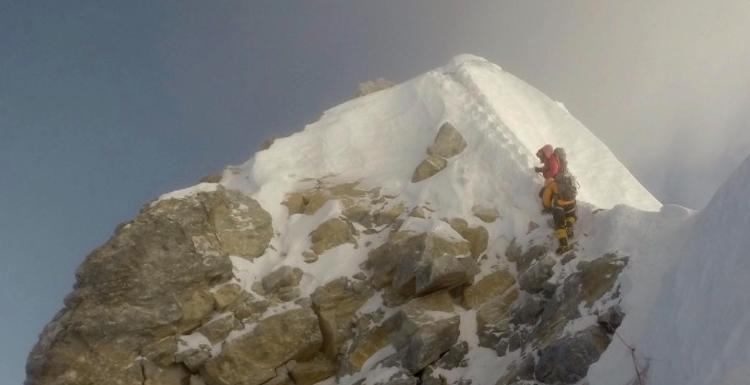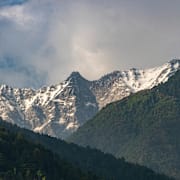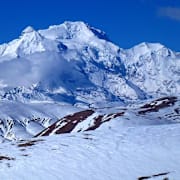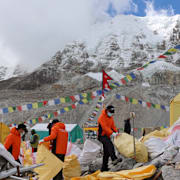
Landmärke nära Mount Everests topp förstört
Det kända landmärket Hillary Step på Mount Everest har förstörts, rapporterar BBC. Den 12 meter höga, nästan helt vertikala, klippväggen döptes efter Edmund Hillary som tillsammans med Tenzing Norgay var först att bestiga världens högsta berg 1953.
Troligen förstördes klippväggen i den kraftiga jordbävningen som drabbade Nepal 2015. Förra året låg det så mycket snö på toppen att klättrare inte kunde avgöra om landmärket var borta eller inte. Men nu står det klart att så är fallet.
”Jag kan meddela att den klippdel som heter Hillary Step definitivt inte finns där längre”, skriver den brittiske klättraren Tim Mosedale på sin Facebook-sida.
bakgrund
Hillary Step
Wikipedia (en)
The Hillary Step was a nearly-vertical rock face with a height of around 12 metres (39 ft) located high on Mount Everest at approximately 8,790 metres (28,839 ft) above sea level. It was located on the southeast ridge, halfway between the "South Summit" and the true summit, and was the last real challenge before reaching the top of the mountain via the southeast route. The Step was named after Sir Edmund Hillary who was the first person, along with Tenzing Norgay, to scale it on the way to the summit. It was suspected in 2016 that the 2015 earthquake had altered the Hillary Step, but there was so much snow it was not clear if had truly changed.. It was confirmed in May 2017 by climbers including professional high-altitude expedition leader and six-time Everest summiteer Tim Mosedale that "the Hillary Step is no more."
The Step was known as the most technically difficult part of the typical Nepal-side Everest climb In some climbing seasons after heavy snowfall, the rock face could be bypassed with snow/ice climbing. Climbing the Hillary Step had the danger of a 10,000 ft (3,048 m) drop on the right (when going up) and an 8,000 ft (2,438 m) drop on the left. The Hillary Step was where the late Anatoli Boukreev found a body hanging from ropes at the base of the step as relayed by his book The Climb. One expedition noted that climbing the Hillary Step was "strenuous," but did offer some protection from the elements.
When Hillary and Tenzing first climbed the Hillary Step on 29 May 1953, they climbed the crack between the snow and the rock. Hillary reported that the snow on the step was harder than at lower elevation.
In later years ascent and descent over the Step was generally made with the assistance of fixed ropes, usually placed there by the first ascending team of the season. With increasing numbers of people climbing the mountain, the Step frequently became a bottleneck, with climbers forced to wait significant amounts of time for their turn on the ropes, leading to problems in getting climbers efficiently up and down the mountain. Only one climber at a time could traverse it. In a good climbing situation it was about a two-hour climb from the South Summit to the Hillary Step, one to two hours to climb the cliff, and then another 20 minutes from the top of the Hillary Step to the Summit of Mount Everest.
Pre-2015 descending sequence along Everest's southeast ridge:
Summit of Everest
Final slope to Summit
Cornice traverse (knife-edge ridge)
Hillary Step 40 ft / 12 m rock cliff
South Summit of Everest
The Balcony (27,500 ft. / 8380 m)
Omni är politiskt obundna och oberoende. Vi strävar efter att ge fler perspektiv på nyheterna. Har du frågor eller synpunkter kring vår rapportering? Kontakta redaktionen



